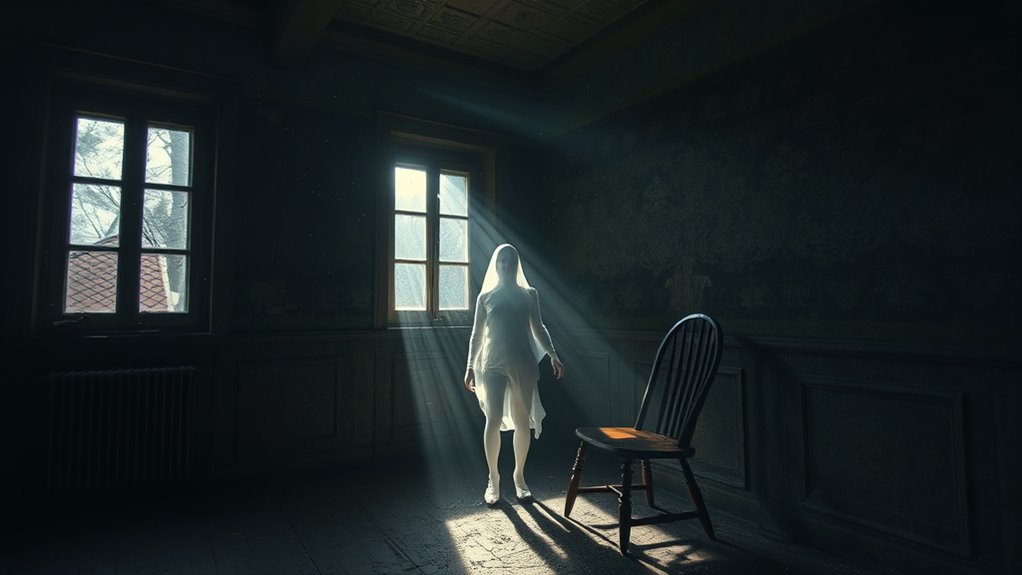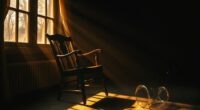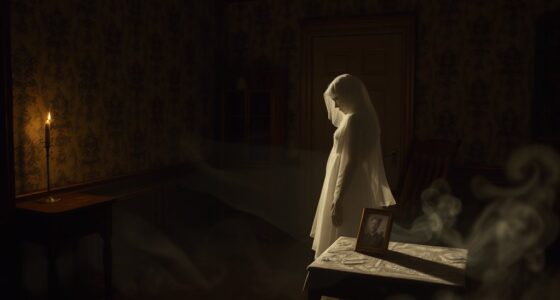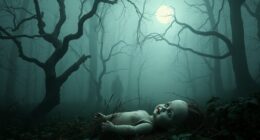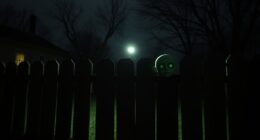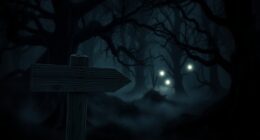While definitive proof of the paranormal remains elusive, notable investigations, like those by Ed and Lorraine Warren, have sparked interest and belief in supernatural phenomena. The rise of spiritualism in the 19th century also shaped cultural narratives, enticing people to explore ghostly claims. Psychological factors, like suggestibility and cognitive biases, influence perceptions of the unseen. Advances in technology aid investigations, but challenges in validating experiences persist. If you’re curious, there’s much more to uncover about this intriguing topic.
Key Takeaways
- The rise of spiritualism in the 19th century, exemplified by the Fox Sisters, sparked public interest in paranormal claims.
- Investigations by figures like Harry Price and the Warrens revealed both fraudulent and intriguing paranormal phenomena.
- Technological advancements, such as EMF meters and EVP recorders, have enabled more systematic evidence gathering in paranormal investigations.
- Psychological factors, including cognitive biases and cultural conditioning, shape how individuals interpret and perceive paranormal experiences.
- Challenges in validating paranormal claims stem from subjective experiences and the lack of reproducible scientific evidence.
Historical Context of Paranormal Claims
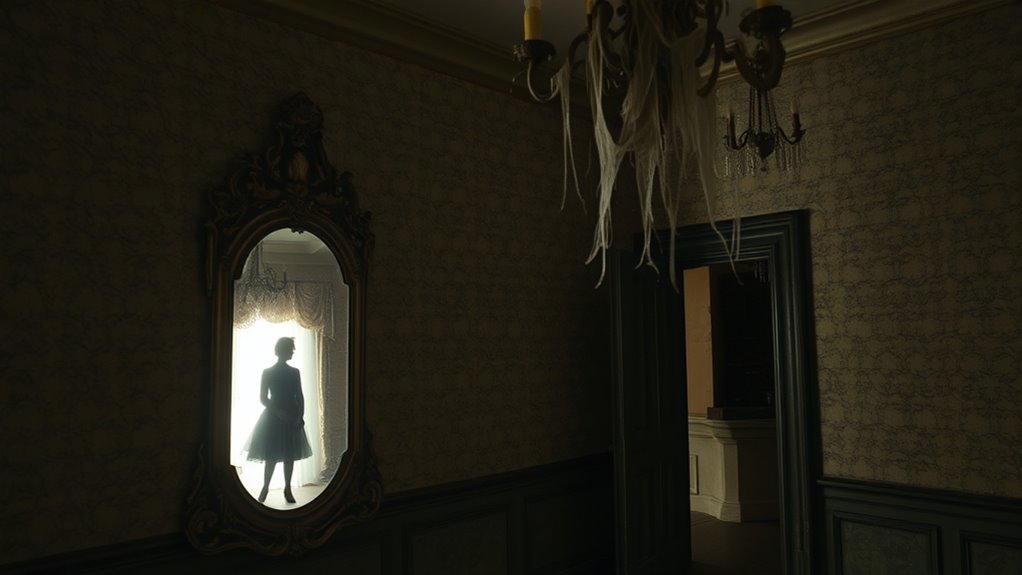
As you explore the historical context of paranormal claims, you’ll discover that these beliefs have deep roots, particularly in the 19th century during the rise of spiritualism.
This movement peaked with individuals like the Fox Sisters, who famously used Morse code to claim communication with spirits. The general public became fascinated with these ideas, leading to widespread interest in the paranormal.
The invention of the telegraph allowed for rapid communication, influencing spiritualist practices and further fueling public curiosity.
This era laid the groundwork for modern beliefs surrounding ghosts and the afterlife, shaping not just cultural narratives but also societal perceptions of life beyond death.
The impact of these beliefs continues to resonate today, reflecting humanity’s enduring quest for answers.
Notable Investigations and Findings

The fascination with the paranormal has prompted numerous notable investigations that blend skepticism with a quest for understanding.
Harry Price, renowned for his work at Borley Rectory, exposed fraudulent mediums and applied stage magic to debunk spiritualists.
On the other hand, Ed and Lorraine Warren investigated infamous cases like the Amityville Horror and the Perron family’s haunting, leading to over 10,000 investigations and inspiring films like “The Conjuring.”
Investigators utilize various methods, including cameras, audio recorders, and EMF meters, to gather evidence.
Groups like The Ghost Club and TAPS further explore these phenomena, aiming to uncover the truth behind alleged hauntings while providing a platform for discussion and research.
Each investigation adds depth to our understanding of the paranormal.
Psychological Factors Influencing Perception
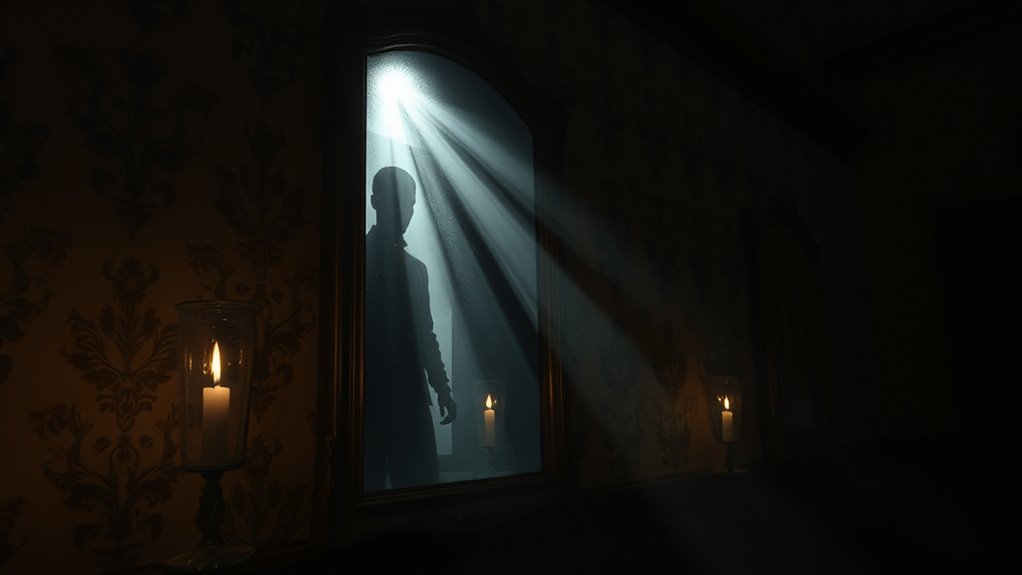
Numerous psychological factors shape how you perceive paranormal events, often leading to misinterpretations of everyday occurrences.
Cognitive biases make you recognize patterns, even when they don’t exist, causing you to misinterpret natural phenomena. Memory distortion can exaggerate emotional experiences, altering how you recall events. Suggestibility plays a role, too; when you hear ghost stories, your brain primes for paranormal activity.
Fear and anxiety heighten your perception, amplifying any unusual experience. Additionally, transliminality allows you to notice stimuli others might miss, while cultural conditioning influences your interpretation of these events.
Engaging with paranormal beliefs can provide emotional comfort, helping you cope with the unknown and reinforcing social bonds through shared experiences.
The Role of Technology in Evidence Gathering
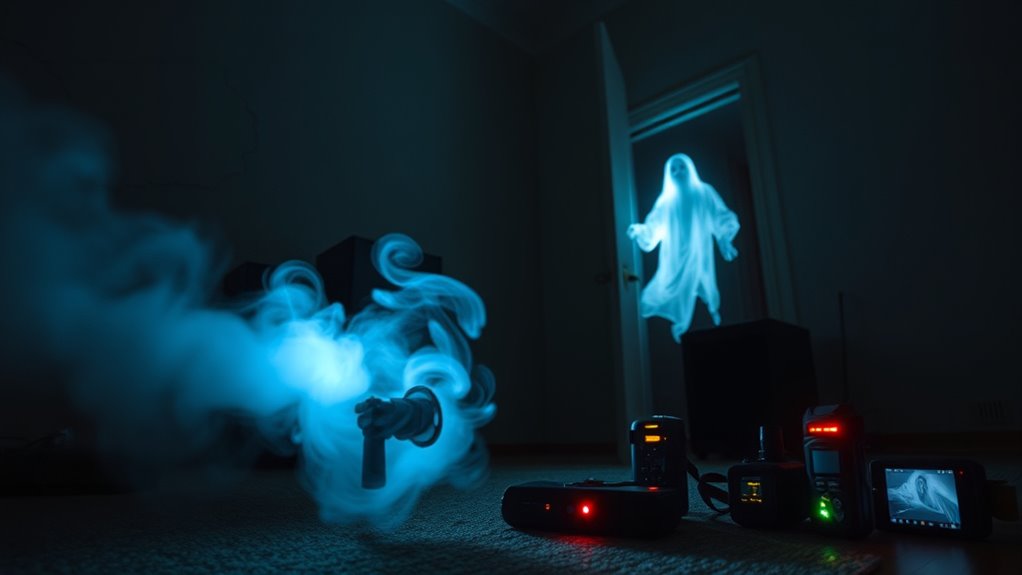
When exploring the mysteries of the paranormal, technology plays a pivotal role in how you gather evidence. You can use audio recorders to capture Electronic Voice Phenomena (EVPs), revealing whispers from beyond.
Thermal cameras help detect cold spots, while EMF meters identify electromagnetic field changes often linked to paranormal activity. Motion detectors alert you to movements, and full-spectrum cameras capture images outside the visible range.
For advanced investigations, spirit energy sensors and vibration sensors can indicate the presence of entities. Additionally, environmental detection instruments monitor fluctuations that may signal paranormal events.
With these tools, you enhance your ability to document and analyze the unexplainable, turning your ghost hunting experience into a more systematic and reliable pursuit.
Cultural Interpretations of the Supernatural

Across cultures, interpretations of the supernatural vary widely, reflecting unique beliefs and practices that shape people’s understanding of the world. You’ll find gods, spirits, and ancestral beings with extraordinary powers in every culture.
These entities often play crucial roles, offering healing, guidance, and comfort. For Indigenous cultures, the interconnectedness of all beings highlights the importance of ancestral spirits and sacred sites.
In contrast, Western beliefs frequently center on ghosts tied to unresolved emotions, reflecting a mix of fear and curiosity. Asian cultures emphasize ancestor worship, promoting social harmony and community cohesion.
Ultimately, supernatural explanations help you make sense of natural and social phenomena, showcasing their universal significance in human experience. The exploration of paranormal phenomena serves as a testament to humanity’s enduring quest for understanding beyond the tangible realm.
Challenges in Validating Paranormal Activity

Understanding cultural interpretations of the supernatural sets the stage for examining the challenges of validating paranormal activity.
You’ll find that the lack of scientific evidence complicates claims, making it hard to establish credibility. Many experiences are subjective, leading to replication issues in controlled conditions. Confirmation bias can skew interpretations, while misinformation further clouds the field.
The unpredictable nature of paranormal events complicates controlled experimentation, leaving researchers without widely accepted empirical methods. Belief systems also play a significant role, influencing perceptions and interpretations.
Additionally, challenges in independent verification and fraud detection hinder efforts to validate experiences. Overall, the complexity and variability of paranormal phenomena make definitive conclusions elusive, requiring a cautious approach.
The Ongoing Debate: Skepticism vs. Belief
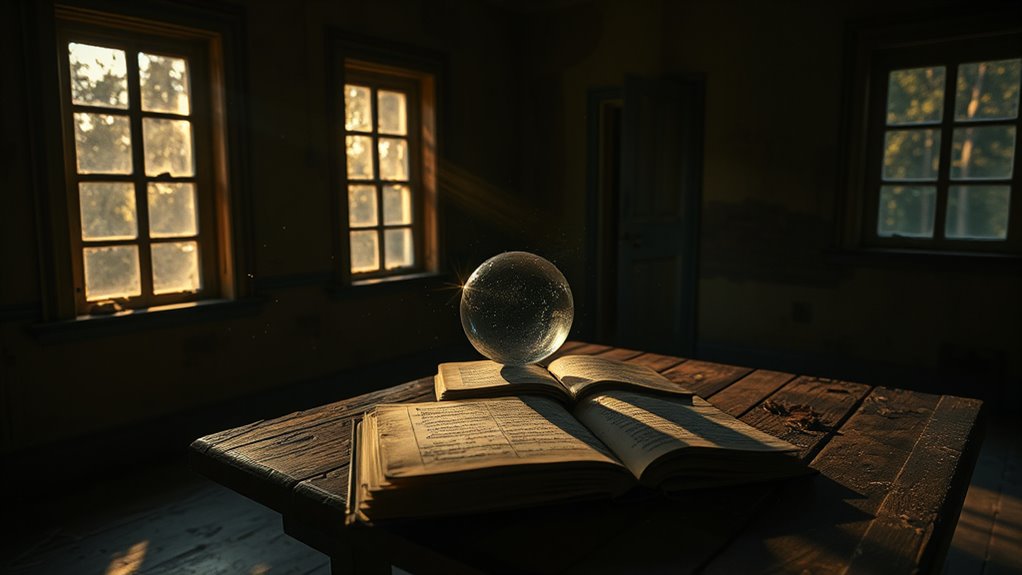
As the debate over paranormal phenomena rages on, you’ll find that skepticism and belief often clash, each side presenting compelling arguments.
Skeptics rely on scientific methods to evaluate claims, demanding rigorous evidence and critical thinking. They engage with various disciplines, insisting on natural explanations for seemingly paranormal events.
On the other hand, believers draw from personal experiences and cultural perspectives, often citing anecdotes as proof. This clash reveals a fundamental disagreement on what constitutes acceptable evidence.
Despite skepticism, millions continue to embrace paranormal beliefs, driven by community and spirituality. Engaging in dialogue between skeptics and believers fosters understanding, ensuring that the debate remains dynamic and relevant in both scientific and cultural contexts. Recognizing the importance of emotional support can also play a crucial role in how individuals cope with their beliefs and experiences related to the paranormal.
Frequently Asked Questions
What Are the Most Common Types of Paranormal Experiences Reported?
You’ll often hear about several common types of paranormal experiences. Many people report ghost sightings, where they see apparitions or spirits.
Poltergeist activity is another frequent occurrence, usually linked to emotional distress. Some describe encounters with shadow people, dark figures glimpsed from the corner of their eye.
Additionally, UFO sightings and claims of extrasensory perception (like telepathy) are popular in paranormal discussions. Each experience taps into deep-seated beliefs and curiosity about the unknown.
How Do Personal Beliefs Influence Perceptions of Paranormal Activity?
Your personal beliefs shape how you perceive paranormal activity considerably.
If you’re inclined to believe in ghosts, you’re more likely to interpret eerie sounds or shadows as supernatural occurrences. Media and cultural narratives reinforce these beliefs, making you more susceptible to seeing connections where none exist.
Emotional investment in these beliefs can create a lens through which you view experiences, often dismissing logical explanations in favor of the extraordinary.
Are There Any Famous Haunted Locations With Documented Evidence?
Yes, there are several famous haunted locations with documented evidence. The Stanley Hotel, known for its ghostly encounters, has numerous eyewitness accounts.
Captain Tony’s Saloon in Key West is another hotspot, with claims of paranormal activity linked to its dark past.
Similarly, the Whaley House in San Diego boasts various documented sightings. Each of these sites has a rich history and attracts paranormal enthusiasts enthusiastic to uncover their mysteries.
What Role Do Eyewitness Testimonies Play in Paranormal Investigations?
Eyewitness testimonies play an essential role in paranormal investigations. They provide firsthand accounts that often spark initial interest and lead to deeper inquiries.
However, you should be aware that these testimonies can be influenced by biases and memory distortions, making them less reliable. To strengthen their validity, consider cross-validating multiple accounts and exploring alternative explanations.
Engaging with both believers and skeptics helps create a balanced perspective, enhancing the investigation’s overall credibility.
How Can I Differentiate Between Real and Fabricated Paranormal Claims?
Did you know that about 70% of paranormal claims lack credible evidence?
To differentiate between real and fabricated claims, start by investigating the source’s credibility. Look for detailed accounts and consistency in their stories.
Check for tangible evidence like recordings or photographs, and be wary of claims lacking specifics. Always remain skeptical of sensational narratives; they often hide deception.
A thorough, critical approach will help you discern authenticity in these intriguing situations.
Conclusion
As you reflect on the tales of the paranormal, consider how often coincidence intertwines with the unexplained. That flickering light in your home, the chill down your spine on a quiet night—could they be mere tricks of the mind, or something more? The debate between skepticism and belief continues, and perhaps that’s the beauty of it. Just when you think you’ve got it figured out, life throws in a twist, reminding you there’s always more to discover.
